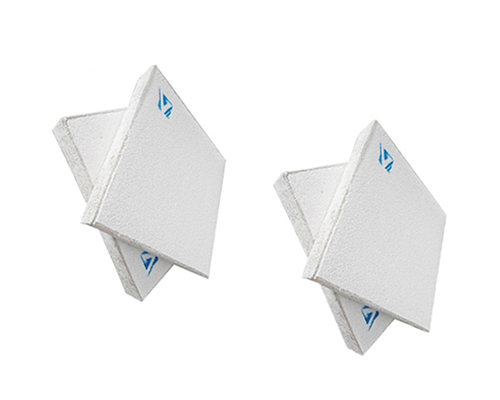Aluminium Foundries Ceramic Foam Filter is used to purify the molten aluminum in the aluminum plate melting and casting workshop, remove large inclusions in the molten aluminum, and adsorb micron-sized particles of fine inclusions.
A “filter cake” is formed on one side of the inlet filter, and deep filtration is carried out inside the ceramic matrix, so these ceramic foam filters are an effective tool to achieve the metallurgical purity of molten metal during the casting process. The filter also stabilizes the filling of the mold, thereby preventing undesirable defects in the casting. The type of ceramic foam filter especially depends on its application requirements.
In the casting process, the ceramic foam filter is an effective tool to achieve the metallurgical purity of the molten metal. Ceramic foam filter can also stabilize the filling of the mold, thereby preventing defective castings from appearing.
Characteristics of Aluminium Foundries Ceramic Foam Filter
1. Accurate dimensional tolerance
2. Stable chemical composition
3. The highest filtration efficiency
4. Excellent strength
5. Resistance to corrosion of molten aluminum and alloys
Aluminum alloy is easily inhaled and oxidized during the casting process. Therefore, there are different degrees of gas and various non-metallic inclusions in the melt, leading to defects such as pores, pores and inclusions in the ingot. Significantly reduce the mechanical properties, processing properties, fatigue resistance, corrosion resistance and anodic oxidation properties of aluminum, and even lead to product scrapping.
In the ceramic industry, Aluminium Foundries Ceramic Foam Filter is used to filter impurities in molten metal to improve the quality and performance of the final product.
After filtration, the viscosity of the aluminum alloy liquid is reduced, and the fluidity of the aluminum alloy liquid is increased by 10%-15%. It can improve the surface quality, improve the performance of the product, improve the effect of the microstructure, and increase the yield. It is widely used in the production of aluminum profiles, aluminum foils, and aluminum alloys.

